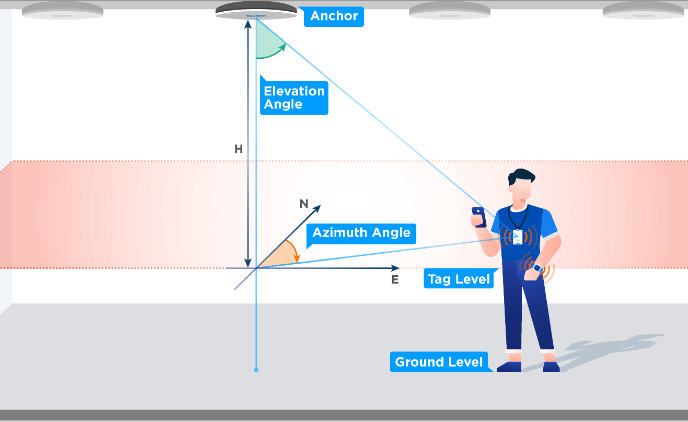In today's fast-growing business environment, asset management has become increasingly complex, especially in large enterprises or manufacturing industries. How to efficiently and accurately track assets, avoid resource waste and improve operational efficiency has become an important issue in enterprise management. As an innovative technical means, RTLS (Real-Time Location System) is gradually becoming an ideal choice for asset tracking management.

Introduction to RTLS Technology
RTLS (Real-Time Location System) is a technology that uses wireless communication technology to track and manage assets in real time through tags, sensors and positioning devices. It can help enterprises accurately obtain the current location, status and historical trajectory of each asset through real-time data transmission. Compared with traditional asset management methods, RTLS systems provide more accurate and efficient asset tracking methods.
How does RTLS track assets?
The working principle of RTLS systems usually relies on different positioning technologies, including radio frequency identification (RFID), ultra-wideband (UWB), Bluetooth low energy (BLE), etc. The following are the main steps for RTLS to track assets:
Tag installation
An RFID tag or UWB/BLE sensor is installed on each asset. These tags are usually small and sturdy, and can withstand the influence of different environments. Tags can not only store basic information about assets, but also transmit signals for the system to locate the location.
Positioning device deployment
In the working environment of the enterprise, multiple receivers or positioning base stations are installed. These devices can receive the signals emitted by the tags and calculate the precise location of the tags through algorithms.
Real-time data transmission and processing
Whenever the location of the asset changes, the tag will continuously send information to the positioning device in the system, and the system will calculate the new location of the asset based on the received signal. This information will be fed back to the management personnel in real time and displayed on the interface through the platform or mobile application for instant viewing and operation.
Location history tracking
RTLS can not only provide real-time location, but also record the movement trajectory of assets. Through data analysis, managers can view the usage history of assets over a period of time, which is crucial for auditing, asset maintenance and optimizing management decisions.
Advantages of RTLS in asset tracking
Improve efficiency and accuracy
Traditional asset management methods rely on manual records or regular inventory, which are prone to omissions, errors or waste of resources. The RTLS system can realize real-time monitoring of assets and automatic data collection, greatly reducing the interference of human factors and ensuring the accuracy and integrity of asset data.
Reduce asset loss and waste
In the absence of RTLS, companies may experience production delays or cost increases due to lost or misplaced assets. With RTLS, managers can locate the location of each asset in real time, reducing the risk of lost or misplaced assets even in complex environments.
Improve decision-making efficiency
The RTLS system can provide real-time data support, allowing companies to make more accurate decisions when scheduling assets, allocating resources, and scheduling production. For example, when a piece of equipment fails or is out of service, the system can immediately alert relevant personnel and quickly start repair or replacement processes to avoid production stagnation.
Optimize maintenance and management
Through the historical data of the RTLS system, companies can discover asset usage patterns, maintenance cycles, and potential failure points. Based on this data, companies can perform equipment maintenance and failure prediction in advance, reduce the possibility of emergencies, and extend the service life of assets.
Enhance security
In some high-risk industries, RTLS can also provide security for assets. For example, medical equipment in hospitals can be monitored through RTLS to ensure that it is not moved or lost at will, preventing medical safety accidents caused by missing equipment.
Application of RTLS in different industries
The application of RTLS technology has been widely extended to multiple industries, among which the most typical applications include:
Medical industry: hospitals use RTLS systems to track important medical equipment, drugs and patients in real time to ensure the safe and timely use of equipment and drugs.
Manufacturing industry: factories use RTLS to track tools and equipment on the production line to optimize production processes and improve equipment utilization.
Logistics industry: warehouses and distribution centers use RTLS to track goods in real time and improve inventory management efficiency.
Retail industry: shopping malls and warehouses can use RTLS to accurately manage goods and reduce inventory errors.
RTLS technology provides enterprises with a more efficient and intelligent asset management method. Through real-time tracking, precise positioning and data analysis, enterprises can better grasp the dynamic status of assets, thereby improving management efficiency, reducing costs and increasing security.